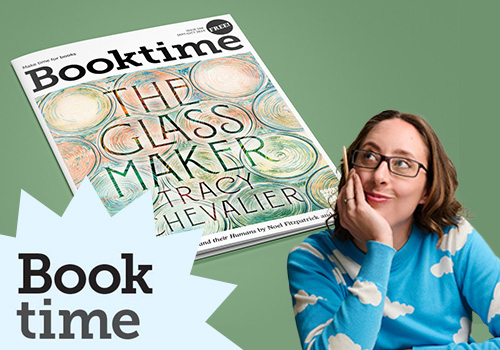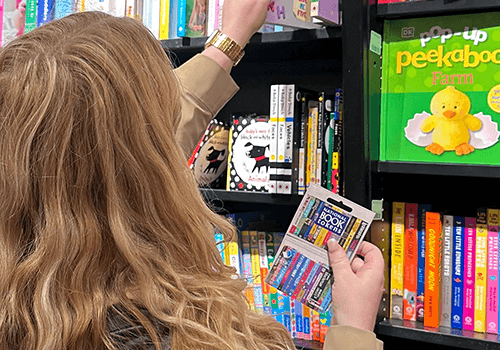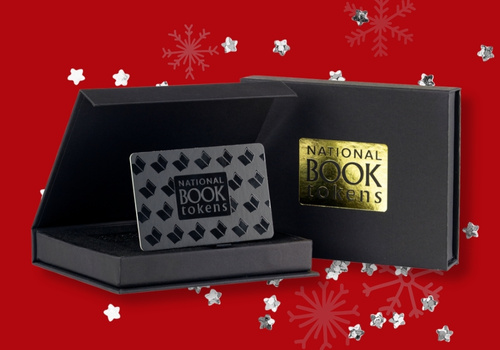Booktime: Interview with Tracy Chevalier, author of The Glassmaker
In this innovative novel from the author of The Girl with the Pearl Earring, we travel through the life of Murano glassmaker Orsolo Rosso, and we also experience the changing centuries, from 1486 to the present day. We interviewed Tracy Chevalier to discover her inspirations.
This exclusive feature is from the Sept-Oct 2024 issue of Booktime magazine, the essential guide to the most anticipated books of the season. Find a free copy of Booktime in your local independent bookshop.
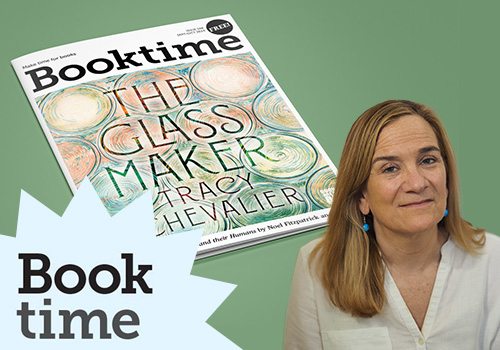
"Thousands of books have been written about Venice, so the hard part was choosing which to read."
What drew you write a novel following the life of a female glassmaker on Murano?
A reader suggested it! Normally I politely ignore suggestions from others. But after an event a man came up and said I should write
about Venetian glass beads, as they were used in trade worldwide and were made mainly by women. He even gave me some books on them. I filed the idea away and brought it out again when my husband asked when I was going to set a book in a place we actually wanted to visit. 'How about Venice' I said, and reached for those bead books.
How did you develop the unusual timeline in the novel?
I wanted to cover 500 years of Venetian history, from the height of the city's prosperity to its transformation into a tourist
destination. At the same time I wanted to follow the fortunes of one family. I wasn't keen on them dying and readers having to care about their descendants. I was pondering this problem and thought, 'Well, they just don't die, then. They skip through time. It felt right to have time run differently in Venice; it's a unique, magical place where you feel disconnected from the rest of the world. I wrote much of it during the pandemic, when we all experienced time differently, so it didn't seem crazy.
The book charts the many changes in Murano and Venice through the centuries. Did you do a lot of research into both the place and the history?
Thousands of books have been written about Venice, so the hard part was choosing which to read. I spent a lot of time in Venice and especially on Murano, watching glassmakers work. I got to know an American glass artist and her Muranese glass maestro husband, and they were incredibly helpful answering questions and introducing me to people. I also tried my hand at making beads, so I could describe the process more accurately.
The novel also takes us through both the plague and the pandemic. Do you think there is a parallel between these two events?
Yes. This became clear when I was researching the 1575 Venetian plague. The lockdown had just lifted and I was able to do research at the British Library, sitting two metres away from others and wear a mask. It was so strange reading about all the things the Venetians did that we did too: quarantines, tracing contacts, quack 'cures'. By comparison, we had it easy, with our ventilators, medicine, and eventually a vaccine. In Venice a quarter of the population
died.
At the heart of the novel is a love story between Orsola and Antonio. Do you think that Orsola would have had to give up some of her freedom if she'd followed her heart?
I don’t want to give too much away here, but if Orsola had chosen differently she wouldn't have been able to continue working with glass. As it was, even on Murano women were not part of the glass community, except in making beads, which were considered inconsequential.
The character of Domenego is an interesting one – was he inspired by a real person?
I saw Domenego in a 15th-century painting by Carpaccio called ‘Miracle of the Holy Cross at Rialto.’ It’s full of crowds by the Grand Canal, and right in the centre is a solemn African gondolier. I knew immediately that I wanted to make him into a character, as a reminder both of the varied Venetian population, and of the tangible presence of the slave trade – which glass beads were a part of.
Which other authors inspire you in your work?
I learned a lot from Rose Tremain, my tutor at University of East Anglia when I did an MA in creative writing. I’ve also been impressed by Maggie O’Farrell’s successful pivot to historical novels. On a sentence-by-sentence basis, no one does it better than Sarah Waters: beautifully drawn characters, unabashedly great plots, and not a cliché in sight.
What do independent bookshops mean to you?
It's like the difference between shopping at a supermarket and a deli. The supermarket may have more, but the deli person behind the counter has chosen carefully and knows their stock well, and has opinions. I love that.
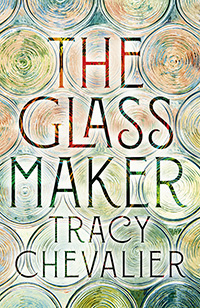
About The Glassmaker by Tracy Chevalier
Venice, 1486. Across the lagoon lies Murano. Time flows differently here – like the glass the island’s maestros spend their lives learning to control.
Women are not meant to work with glass, but Orsola Rosso flouts convention to save her family from ruin. She works in secret, knowing her creations must be perfect to be accepted by men. But perfection may take a lifetime.
Skipping like a stone through the centuries, we follow Orsola as she hones her craft through war and plague, tragedy and triumph, love and loss.
Her creations will adorn the necks of empresses and courtesans from Paris to Vienna – but will she ever earn the respect of those closest to her?
Tracy Chevalier is a master of her own craft, and The Glassmaker is vivid, inventive, spellbinding: a virtuoso portrait of a woman, a family and a city that are as everlasting as their glass.
